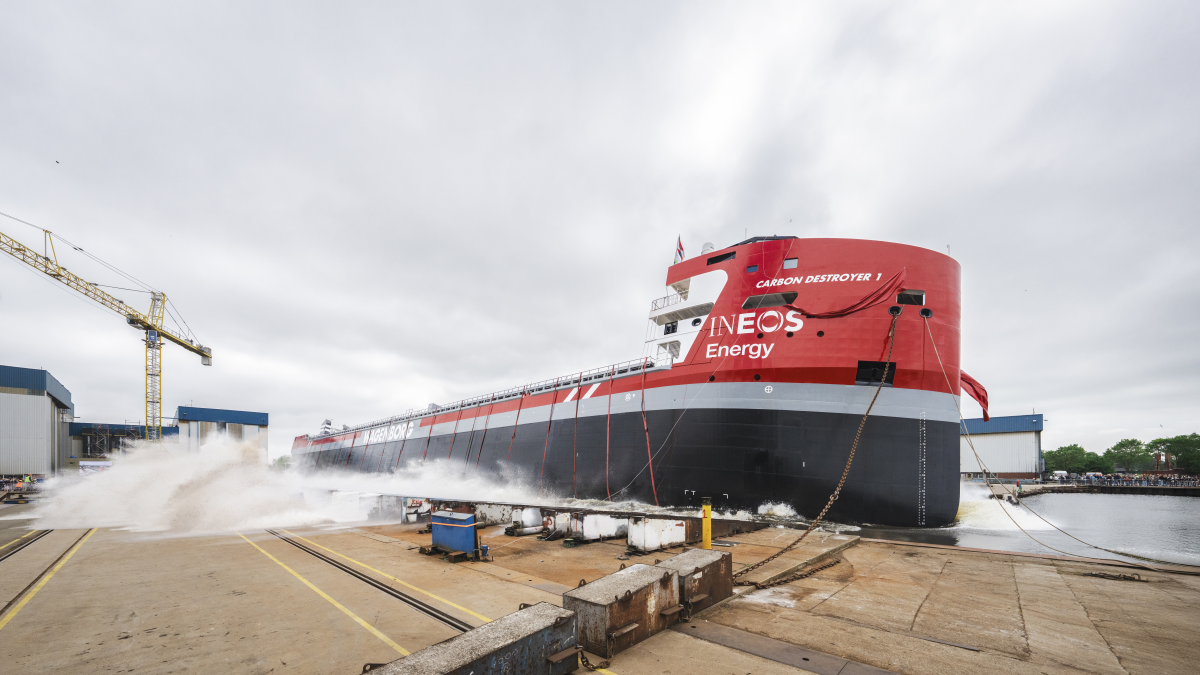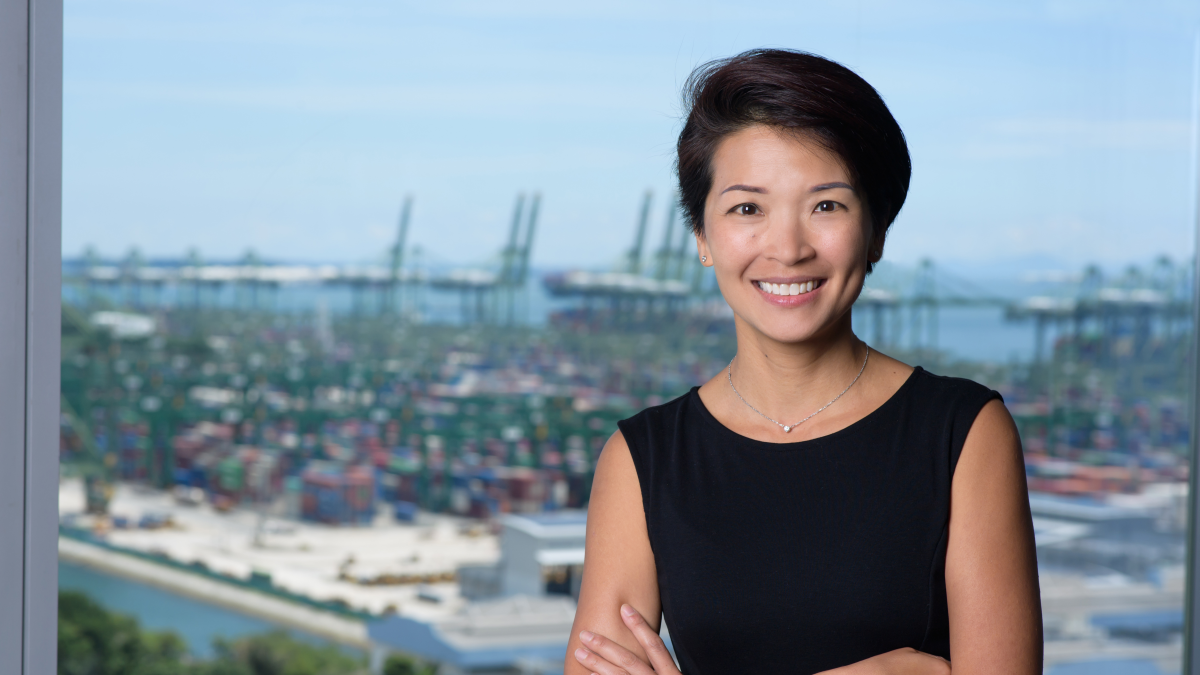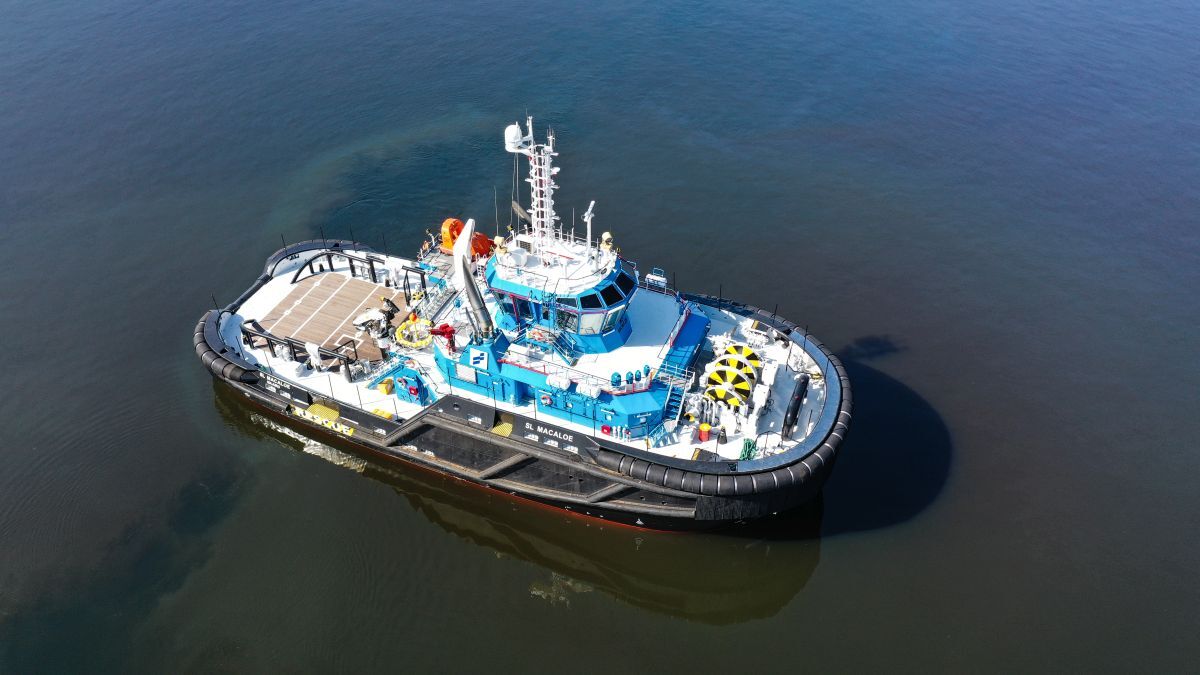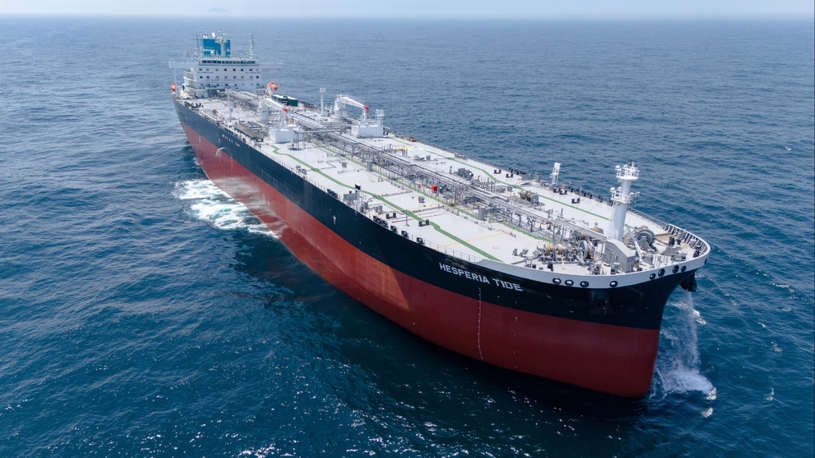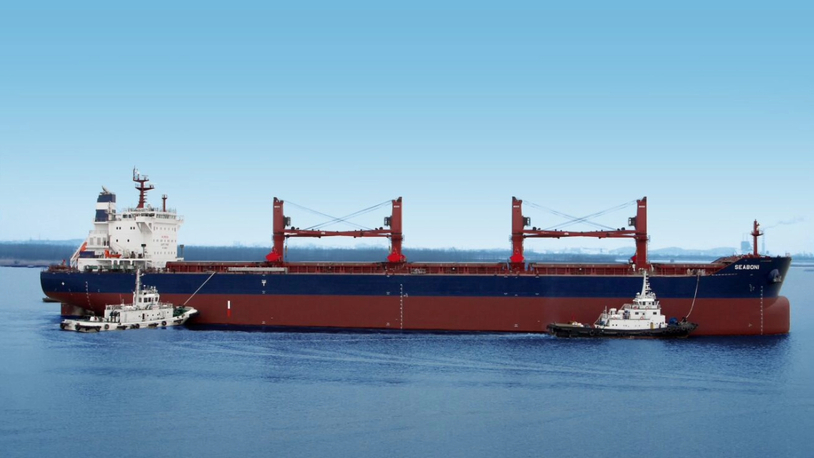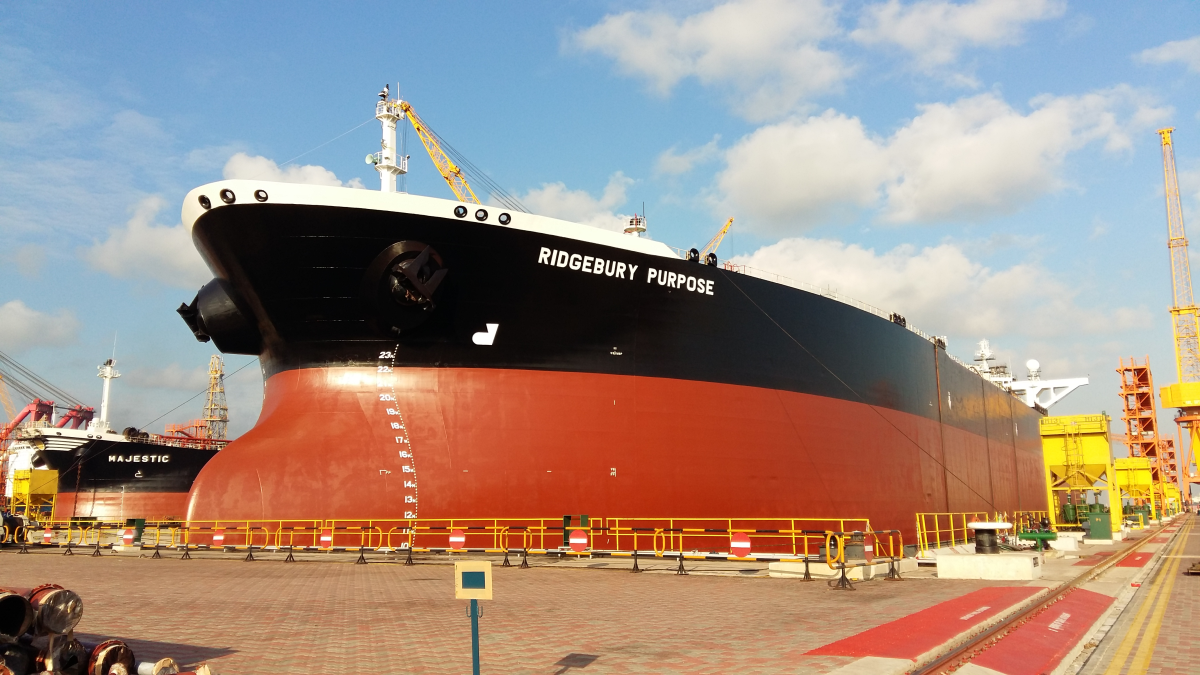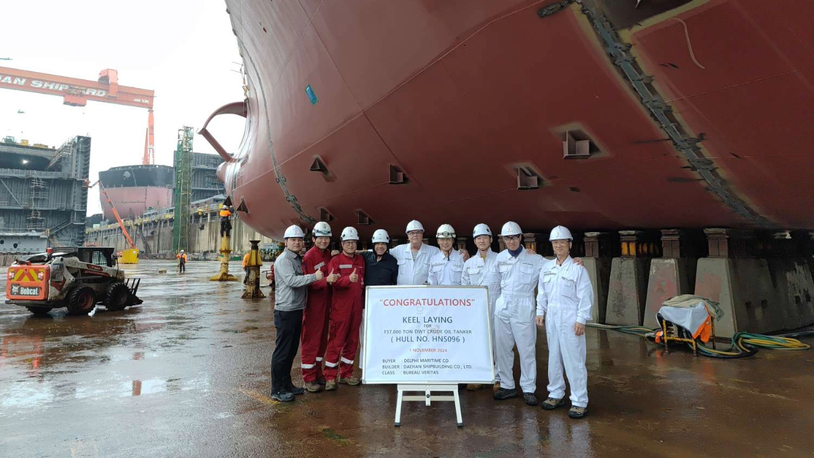Business Sectors
Events
Contents
Carbon Destroyer 1 marks EU CCS milestone
Europe’s first CO2 carrier links the Port Esbjerg terminal and Nini West for the EU’s first full-scale carbon storage value chain
Project Greensand has transitioned from planning to delivery with the recent completion and launch of Carbon Destroyer 1, the European Union’s inaugural purpose-built offshore carbon dioxide carrier. This vessel forms a critical component of the EU’s first full-scale carbon capture and storage (CCS) value chain, integrating maritime engineering, onshore logistics and subsurface storage.
The christening ceremony took place on 14 May 2025 at the Royal Niestern Sander shipyard in the Netherlands, where Lady Catherine Ratcliffe served as godmother, officially naming the vessel Carbon Destroyer 1. Sir Jim Ratcliffe, chairman of INEOS and part-owner of Manchester United Football Club, declared: “The launch of Carbon Destroyer 1 is an important next step for carbon capture and storage in Europe. We are demonstrating that carbon storage is commercially viable and a far better way to decarbonise Europe without its deindustrialisation.” Royal Wagenborg chief executive officer Egbert Vuursteen added: “This launch is a defining moment for Wagenborg. It combines over a century of maritime experience with a forward-looking vision of sustainability. As the first European-built offshore CO2 carrier, this vessel positions us — and our partners — at the forefront of the energy transition in Europe.”
The carrier is based on Wagenborg’s EasyMax hull design, modified specifically for liquefied CO2 transport under pressure and at low temperature. Engineering adaptations include reinforced insulation, high-integrity piping and advanced safety systems, ensuring cargo integrity during North Sea voyages. INEOS Energy Europe, chief executive officer Mads Gade said: “The completion of all sections of the CO2 vessel is a giant step forward for transportation of CO2 in the EU. This ship is essential to our ambition of establishing the first full-scale CO2 storage facility in the EU. With the carrier now entering its next construction phase, Greensand is getting closer to completing Europe’s first full CCS value chain.”
“We are demonstrating that carbon storage is commercially viable and a far better way to decarbonise Europe without its deindustrialisation”
Wagenborg Offshore director Edwin de Vries noted: “We are proud to reach this important milestone together with INEOS for the Project Greensand. The vessel is the first of its kind made in the EU and shows how the maritime industry in the North of the Netherlands can contribute to the energy transition. Construction is progressing steadily and according to plan.”
Parallel to the vessel build, construction has commenced at Port Esbjerg in Denmark on a dedicated CO2 transit terminal. This onshore infrastructure will comprise six storage tanks, each with approximately 1,000 tonne capacity, alongside cryogenic pumping and loading systems to receive liquefied CO2 by road and transfer it onto Carbon Destroyer 1. Initially, captured CO2 from Danish biogas plants will arrive by tanker; future enhancements may include pipeline connections to streamline feedstock delivery.
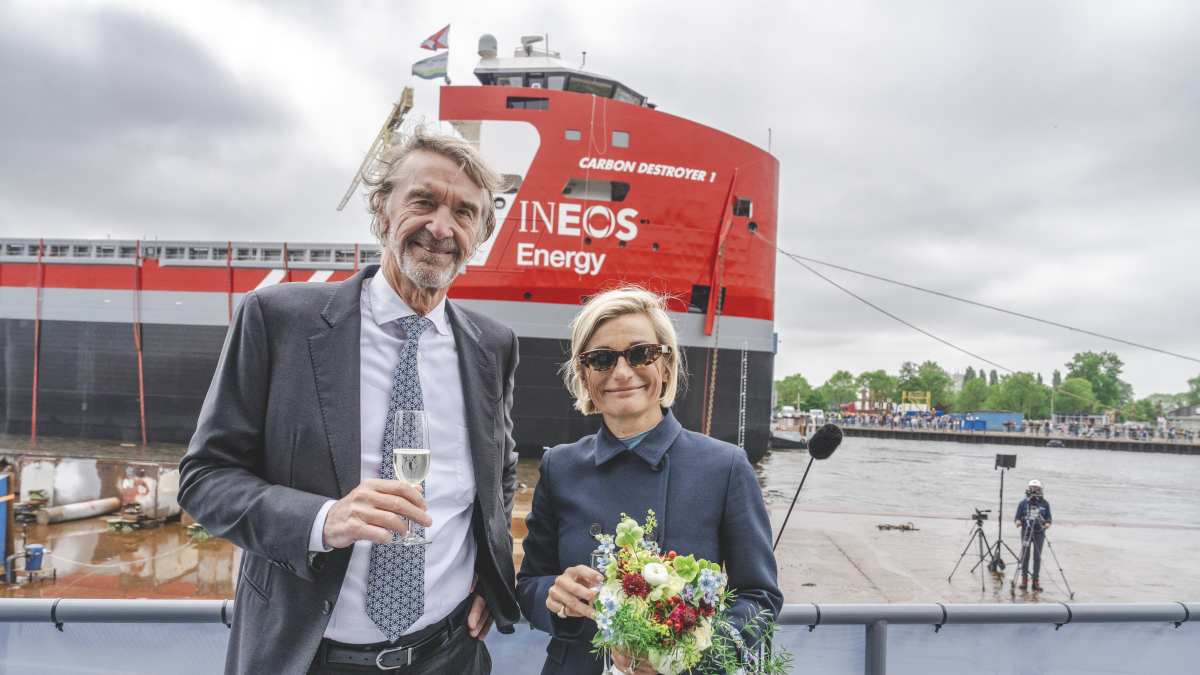
Once operational, Carbon Destroyer 1 will shuttle liquefied CO2 from Esbjerg to the Nini West offshore platform, where it will be injected nearly 1,800 metres below the seabed into the Nini reservoir. These depleted hydrocarbon fields have safely contained gas and oil for millennia and have been certified for long-term CO2 storage following DNV verification of the pilot injection’s integrity earlier this year.
Project Greensand’s final investment decision (FID), taken in December 2024 by INEOS alongside Harbour Energy and Nordsøfonden, provided the financial backing for this integrated value chain. The FID anticipated an initial capacity of 400,000 tonnes per annum, expandable to 8M tonnes per annum by 2030, supported by capital commitments exceeding US$150M across vessels, terminals and injection facilities.
The real-world commissioning phase will begin with sea trials and technical trials of the vessel, focusing on integrated loading operations, cargo boil-off control and emergency response. Concurrent validation of Esbjerg’s cryogenic transfer systems will ensure 24/7 operations. Commercial-scale offshore injection is planned for late 2025 or early 2026, establishing Denmark as the EU hub for permanent carbon storage.
By demonstrating a maritime ‘virtual pipeline’ between industrial emitters and subsurface reservoirs, Carbon Destroyer 1 overcomes limitations of road and rail transport, reducing emissions and costs while enabling scalable CCS. The modular design allows seasonal adjustments and incremental service expansion without major refits, offering flexibility for multiple European capture sites.
“The completion of all sections of the CO2 vessel is a giant step forward for transportation of CO2 in the EU”
Project Greensand’s approach, combining proven maritime design with certified geological storage, provides actionable data for policymakers, investors, and regulators. It moves beyond speculative technology, focusing on operational realities and risk-managed deployment. The carrier’s forthcoming voyages and the terminal’s completion will generate performance metrics vital to replicating the model at other North Sea nations with suitable reservoirs.
As Europe strives to meet ambitious decarbonisation targets in energy-intensive sectors, Carbon Destroyer 1 stands as a blueprint for negative-emissions logistics. Its entry into service will validate maritime CO2 shipping, potentially prompting investment in new carriers, inland terminals and regional injection clusters. Greensand’s success may well catalyse a network of permanent storage hubs, offering industrial emitters a reliable route to net zero.
With Sir Jim Ratcliffe’s emphasis that CCS is “a far better way to decarbonise Europe without its deindustrialisation” and Mads Gade’s confidence in completing “Europe’s first full CCS value chain”, the initiative advances from feasibility to operational reality, offering a tangible route for Europe’s carbon management strategy.
Riviera’s Tankers 2030 Conference, Singapore will be held 19-20 November 2025. Use this link to register your interest and attend the event.
Related to this Story
Events
Offshore Support Journal Conference, Americas 2025
LNG Shipping & Terminals Conference 2025
Vessel Optimisation Webinar Week
© 2024 Riviera Maritime Media Ltd.


